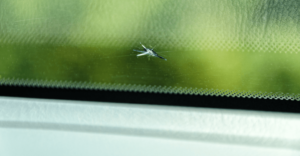7 Reasons Why Windscreens Crack & How to Prevent Each Of Them (Part 1)
Share this post

Surely we don’t want the cracks, but can we avoid them?
Yes we can! This blog post will tell you 7 reasons why windscreens crack and how to prevent each one of them.
As much as we would love to repair and replace windscreens, we also want drivers to be careful with them. And part of this advocacy is to let you know what makes windscreen crack in the first place. So read ahead!
Why do Windscreens Crack?
1. Road Debris
One of the primary reasons for windscreen cracks in Australia is road debris. Loose gravel, rocks, or other objects kicked up by passing vehicles can strike your windscreen, causing chips or cracks. To prevent such incidents, consider the following measures:
- Maintain a safe distance from vehicles ahead to reduce the chance of debris hitting your windscreen.
- Avoid following large trucks or construction vehicles closely, as they are more likely to kick up debris.
- Drive cautiously on unpaved or gravel roads, adjusting your speed to minimize the impact of debris.
2. Improper Use of Wipers
Using wipers incorrectly or neglecting their maintenance can lead to windscreen damage. Follow these tips:
- Replace worn-out wiper blades regularly to avoid scratches or uneven pressure on the windscreen.
- Clean your windscreen before using the wipers to remove abrasive dirt or debris that could scratch the surface.
- Never operate the wipers on a dry windscreen, as this can cause friction damage.
3. Temperature Fluctuations
Australia experiences diverse weather conditions, ranging from scorching summers to chilly winters. These extreme temperature fluctuations can weaken the structure of your windscreen, leading to cracks. Follow these tips to prevent cracks caused by temperature changes:
- Park your vehicle in shaded areas or use windscreen sunshades during hot weather to minimize exposure to direct sunlight.
- Avoid using hot water to defrost your windscreen during winter; instead, use a proper ice scraper.
- Gradually adjust the temperature inside your car when using the air conditioning or heater to prevent sudden temperature variations.
4. Hailstorms and Severe Weather
Australia is prone to severe weather events, including hailstorms, which can wreak havoc on vehicles. Here’s how you can minimize the risk of windscreen cracks during extreme weather:
- Park your vehicle in a covered area, such as a garage or carport, during hailstorms.
- If shelter isn’t available, use thick blankets or car covers to protect your windscreen.
- Avoid parking under trees or near structures that may have loose branches or debris during severe weather.
5. Driving on Rough Roads
Uneven or poorly maintained roads can subject your windscreen to constant vibrations and jolts, leading to cracks over time. To protect your windscreen during such conditions:
- Drive carefully over potholes, speed bumps, or rough terrain, reducing your speed if necessary.
- Keep a safe distance from the vehicle in front of you to anticipate sudden bumps or obstructions.
- Maintain your vehicle’s suspension system and tire pressure to ensure a smoother ride.
6. Impact from Flying Insects or Birds
Insects, such as bees or large dragonflies, and birds in flight can collide with your windscreen, causing cracks or chips. To minimize this risk:
- Use a quality bug deflector or screen on the front of your vehicle to divert insects away from the windscreen.
- Clean your windscreen regularly to remove any residue that may attract insects.
- Be cautious while driving in areas with high bird populations, such as near bodies of water or open fields.
7. Incorrect Defrosting Techniques
During cold weather, improper defrosting methods can stress the windscreen and cause cracks. Take the following precautions:
- Avoid using metal scrapers, sharp objects, or hot water to remove ice from the windscreen, as they can cause thermal shock and lead to cracks.
- Use a plastic ice scraper or a de-icer spray specifically designed for windscreens.
- Start the defrosting process early to give the windscreen ample time to adjust gradually to warmer temperatures.
By being aware of these additional causes and taking the necessary preventive measures, you can better protect their windscreens and ensure a safer driving experience. Remember to consult professional auto glass services for repairs or replacements if your windscreen sustains any damage. Stay vigilant and prioritize windscreen maintenance to prolong its lifespan and maintain optimal visibility while on the road.
If you ever need immediate assistance, Ezy Fix Windscreens can give you details about your specific situation. Send a message on our Facebook or Instagram page or call us at 1800 399 349.
Be notified for Part 2! Follow us on Facebook
Share this post:
If you’ve got a chip in your windscreen, don’t wait – call Ezy Fix Windscreen today. Remember, it doesn’t take much for a chip to turn into a crack.
At Ezy Fix Windscreen, we also replace thousands of windscreens every year. So in case you have problems with your windscreens, we are more than happy to answer your inquiries.
It’s obligation-free! Just click the button below or call us at 1800 399 349. We can replace and repair your windscreen anytime so you can be back on the road fast.
Related Articles

Got a Chip in Your Windscreen? Here’s What to Do Next
Driving on Australia’s roads can often lead to an unexpected chip in your windscreen. What should you do? If you find yourself with a chipped windscreen, it’s essential to….

The Ultimate Guide to Cleaning Your Windscreen After a Chip Repair or Windscreen Replacement
Not only does a spotless windshield look great, but keeping it clean is essential, especially after windscreen repair and replacement.
